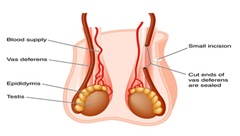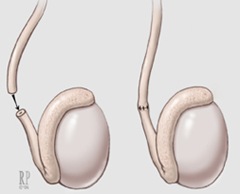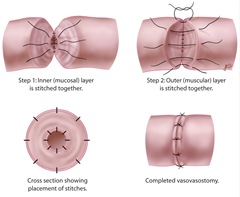Although vasectomies are incredibly common among men, Vasectomy reversal processes are more so. There is a multitude of reasons for men to get a vasectomy reversal process like remarriage, loss of a child, or to cure problems that arise from getting a vasectomy.
While the reasons for why men get a vasectomy reversal deserves its own list, let’s go over some of the details of a vasectomy reversal process. What happens during the reversal process, risks of getting a vasectomy reversal, and aftercare for the procedure.
Vasectomy Reversal
A vasectomy reversal, as the name implies, is a process to reverse your vasectomy by reconnecting the (vas deferens) tubes; these tubes carry sperm from the testicles into the semen. A successful vasectomy reversal will allow the sperm to be present in the semen, which will allow you to make your partner pregnant. But let’s dive deeper into what happens during the procedure.
During the Procedure
Once the surgeons offer you anesthesia, they will begin the process of reconnecting your tubes (vas deferens) to each other. The surgeons will start by making an incision (small cut) on your scrotum, which should reveal the tubes that carry sperm and release it from surrounding tissue. Once the surgeons make the cut, the real surgery will begin.
After the incision, the surgeons will cut open the tubes (Vas Deferens)and examine the fluid inside. If the fluid contains sperm, they will simply reconnect the tubes that will create a passageway for the sperm. Now it is possible that your Vas deferens do not contain any fluid upon opening due to scar tissue blocking sperm flow, which means that your surgeons will then have to perform a vasoepididymostomy. It is also possible that the hospital of your choice may require robot-assisted surgery, but this is not a very common scenario.
Vasoepididymostomy is a procedure where they attach the Vas Deferens tubes directly to the small organs in the back of each testicle; the epididymis holds sperm in them and is responsible for sending sperm to the Vas Deferns. Vasoepididymostomy is a much more complicated process and is something that surgeons will often choose when a regular vasectomy doesn’t work and is not something that every surgeon can perform.
After The Procedure/Aftercare
As soon as your surgery is complete, your doctor will bandage the incisions and will advise that you wear tight fitting undergarments. There are also athletic supporters that can support your genitals; you’re doctor may also ask you to apply ice for 24 or 48 hours to reduce the swelling. You may be sore for several days, and you will not be able to do any exercise that places strain on your genitals for at least six weeks.
Of course, if you have a job without much physically intensive work, then you can go about your work after just a few days of rest. On the other hand, if your job is very physically demanding, you will have to ask your doctor when it is best to go back to work. Finally, you cannot have any sexual intercourse or ejaculate until your doctor says it’s ok. It is very common for men to have to wait at least three weeks before they can reengage in sexual intercourse or ejaculate.
Conclusion
Reversing a vasectomy is a very difficult decision to make, one that is fueled by just how difficult the procedure is. However, after your vasectomy reversal, your partner’s pregnancy rate will increase by at least 30%, or it can go as high as 90%.
In conclusion, be sure to do proper research on where you are getting your vasectomy from and the surgeon that will perform it, as it is very likely that you may require a vasoepididymostomy.
Call today for a confidential consultation with Dr. Yaniv Larish, an experienced Vasectomy reversal surgeon:
Yaniv Larish, MD
Fifth Avenue Urology
4 East 76th Street
New York, NY 10021
(646) 862-5500



